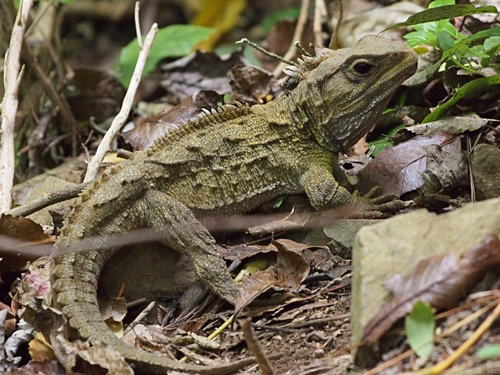
Tuatara
The tuatara, Sphenodon punctatus, is a living fossil of New Zealand, distinguished by its spiny crest and unique third eye. This ancient reptile, thriving in coastal habitats, plays a crucial role in its ecosystem, exemplifying resilience with its remarkable longevity and evolutionary heritage.
50-100 years
Lifespan
600.0 - 900.0 g
Weight
Brown, Grey, Green
Color
15 mph
Top Speed
Least Concern
Conservation Status
Unknown
Population Trend
Characteristics
Sphenodon punctatus, known as the tuatara, is endemic to New Zealand. It is a reptile resembling lizards but belongs to a distinct lineage, the Rhynchocephalia. Tuataras have a spiny crest along their back, a parietal eye, and can live over a century. They thrive in coastal forests and rocky burrows.
Distribution Range of the Tuatara
Sphenodon punctatus, commonly known as the tuatara, is native to New Zealand. It is primarily found on offshore islands, as well as in some protected reserves on the mainland where conservation efforts have been implemented.
Tuatara's Habitat
Environmental Conditions
Tuatara inhabit coastal and forested regions with a temperate climate. They prefer environments with moderate temperatures, as they are ectothermic reptiles. The areas they inhabit typically have a mix of open spaces and dense vegetation, providing both basking spots and cover.
Ecological Niche
Tuatara play a unique ecological role as nocturnal predators in their ecosystems. They primarily feed on invertebrates, small reptiles, and occasionally bird eggs and chicks. Their burrows, often shared with seabirds, provide them with both shelter and a steady food supply through guano, which attracts insects.
Copyright @ Nature Style Limited. All Rights Reserved.
 English
English